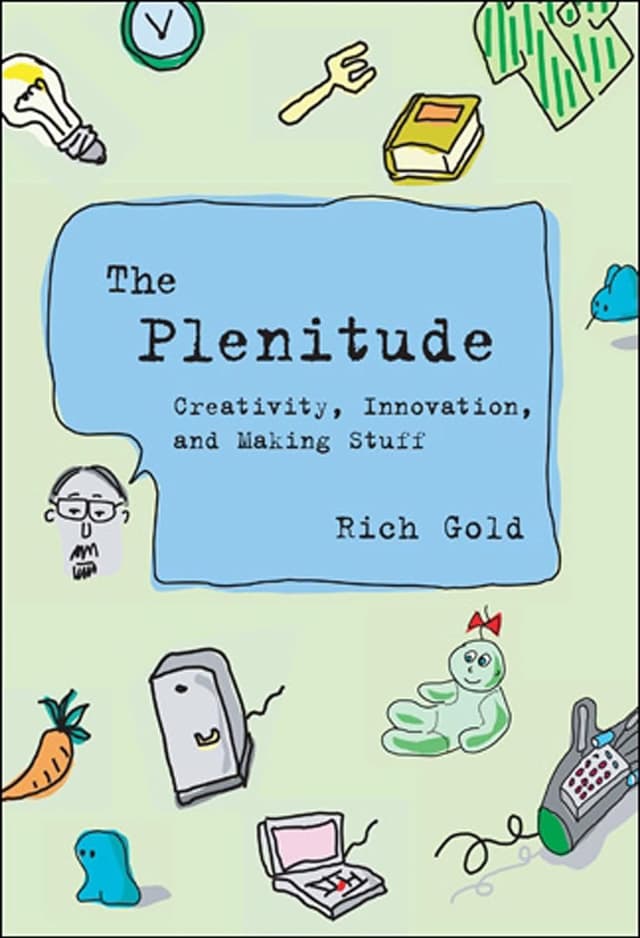Russell Davies | November 16, 2021
The Life in PowerPoint Edition
On presenting, thinking, and format
Recommended Products

Rich Gold explores the concept of 'toy for thought' and delves into creativity, innovation, and the art of making things.

Russell Davies shares insights on PowerPoint, presenting it as more than just presentation software but a powerful tool for organizing thoughts and ideas.
Russell Davies (RD) is someone I met on the internet a long time ago. If you were a marketing strategist in the mid-2000s, you probably read and were inspired by Russell’s blog. He was kind enough to give many of us time and show us the joy of putting ideas into the world. He’s got a new book on PowerPoint that’s called Everything I Know About Life I Learned From PowerPoint. - Noah (NRB)
Russell here. PowerPoint is the software we hate to love. It’s one of our most original and successful technologies, and yet it’s mostly written about in serious publications under headlines like “Death By PowerPoint.” There are countless reasons this contempt for PowerPoint is wrong but a little stream of nerdiness that burst into life the other day reminded me of my favorite and least understood: it’s the perfect “toy for thought.”
Two characteristics of PowerPoint explain this:
First, it’s the perfect multimedia sparkfile. The prolific science writer and thinker Steven Johnson is fascinated by how ideas are created and sustained and one of his practices is keeping and regularly reviewing a Sparkfile: a long-running list of thoughts, ideas, and hunches. (Noah recently repurposed it as a way of managing product ideas.) Johnson has started writing about this again in his Adjacent Possible newsletter and this free edition's focus on “tools for thought” reminded me that PowerPoint should really be included in these conversations. It lets you capture words, pictures, video, links. It’s how to build a slow hunch that goes beyond words. PowerPoint is to modern communications as a text file is to books.
Second, it’s a brilliant idea-processing tool. In her book Broad Band: The Untold Story of the Women Who Made The Internet Claire L Evans interviews a number of hypertext pioneers and investigates how software can help us think. For instance, Alison Kidd a researcher at Hewlett-Packard, talks about the physical piles of paper we make as “spatial holding patterns” that enable us in “creating exploring and changing structures which can help inform us in novel ways.” Or Cathy Marshall of PARC and Microsoft Advanced Research builds hypertext systems “meant to empower kinesthetic thinking, the process of moving things around and trying them out akin to ‘wiggling molecular models in space or moving a jigsaw puzzle piece into different orientations.’”
Anyone who’s spent time building a presentation by noodling around in the Slide Sorter will recognize that PowerPoint excels at this. It lets you store and juxtapose language and image. You can play, wiggle, juggle. You can dive in and pull back, swoop down and sweep past. And then it lets you share them. In person. With other people who are in the same room as you. (For post-pandemic definitions of “‘room”’). At which point it also becomes about collective endeavor. It’s the modern successor to HyperCard, built for sociality, and networks of cooperation.
Why is this interesting?
A lot of people ask me for advice on writing presentations. They often think a good presentation has to spring from a moment of creative insight or inspiration. I point them at a quote from the science fiction author Octavia E Butler: “First forget inspiration. Habit is more dependable. Habit will sustain you whether you're inspired or not.” The habit that will get you a great presentation is keeping a PowerPoint Sparkfile: a store of images, ideas, quotes, phrases, clips, analogies, diagrams, data. Then you’re never making the rookie error or starting from a blank screen.
PowerPoint is often overlooked because it’s still the people of The Word who police culture. The haters are normally those who don’t need any assistance being listened to: writers, academics, all those CEOs who’ve famously banned it. But PowerPoint is everywhere, for everyone, it bubbles up from the street and gives the rest of us a way to play, think and communicate. Embrace it and it will give you power. That’s its point. (RD)
Quick Links:
PowerPoint was largely the invention of a genius called Robert Gaskins. It’s the way it is partly because he understood the magic of art, theatre and literature, not just technology. He’s written a great book about the invention of PowerPoint and made the PDF available for free (RD)
‘Toy for thought’ was originally coined by artist, composer, designer, inventor and writer Rich Gold. He wrote a fascinating little book called The Plenitude. (RD)
If you want to see the real creative imaginative joy of PowerPoint as it’s actually used in the real world check out #powerpointparty on tiktok (RD)
[Sponsored: Atlas Bars are GMO-free and keto-friendly with 15 grams of protein and just a gram of sugar. We’ve tried Atlas and they are very good. Use this link for WITI readers to get 20 percent off. Get started with the sample pack.]
--
WITI x McKinsey:
An ongoing partnership where we highlight interesting McKinsey research, writing, and data.
The art of apprenticeship. Postpandemic skill gaps need filling, and formal learning alone won’t do the trick. Scaling the lost art of one-on-one learning can make the difference. Here's how.
--
Thanks for reading,
Noah (NRB) & Colin (CJN) & Russell (RD)
—
Why is this interesting? is a daily email from Noah Brier & Colin Nagy (and friends!) about interesting things. If you’ve enjoyed this edition, please consider forwarding it to a friend. If you’re reading it for the first time, consider subscribing (it’s free!).



